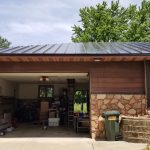Energy production is about to resume at the site of the worst nuclear accident in history.
n April 1986 the nuclear accident at Chernobyl devastated a large swathe of land in the north of Ukraine. The workers’ city of Pripyat was evacuated, to become one of the world’s most notorious ghost towns—while dozens of villages in the vicinity of the nuclear power plant were similarly deserted as radiation polluted earth, air, and water alike. At the very heart of the Exclusion Zone however, the plant itself would remain a hub of activity.
 Chernobyl Nuclear Power Plant (NPP) was still producing energy for 14 years after the accident at Reactor 4. In the wake of the disaster, amid the rubble and radiation, it was safer to allow the remaining fuel rods to burn out in their own time, rather than trying to remove them. Reactor 2 wasn’t shut down until after a fire in 1991; Reactor 1 followed in 1996. Reactor 3 was in use until December 2000, and since then Chernobyl has produced no energy at all—until now.
Chernobyl Nuclear Power Plant (NPP) was still producing energy for 14 years after the accident at Reactor 4. In the wake of the disaster, amid the rubble and radiation, it was safer to allow the remaining fuel rods to burn out in their own time, rather than trying to remove them. Reactor 2 wasn’t shut down until after a fire in 1991; Reactor 1 followed in 1996. Reactor 3 was in use until December 2000, and since then Chernobyl has produced no energy at all—until now.
The Ukrainian-German project Solar Chernobyl is preparing to launch a solar farm right next to the Chernobyl reactors. Due to go online early in 2018, the one-megawatt installation features 3,800 photovoltaic panels and will be capable of powering as many as 2,000 homes. A further 99 megawatts are planned for a future development, and the project, which has so far cost a million euros ($1.25 million) to build, is expected to pay itself off within seven years.





